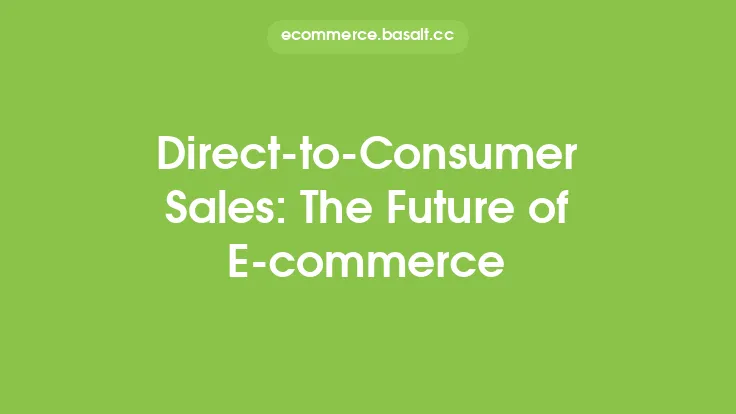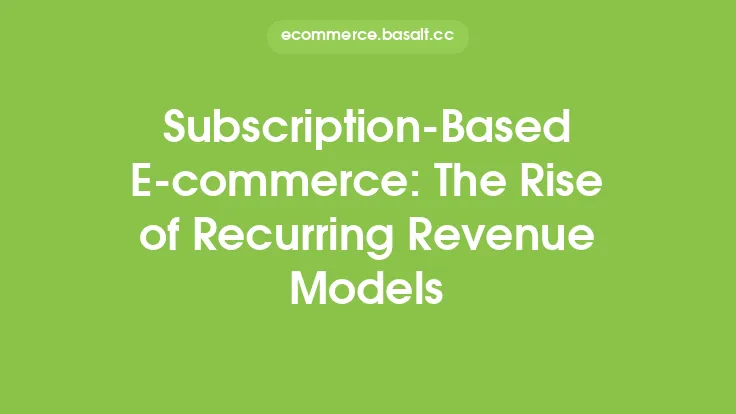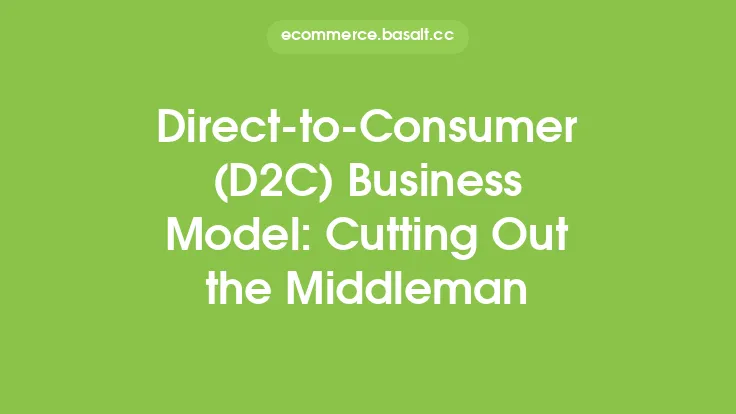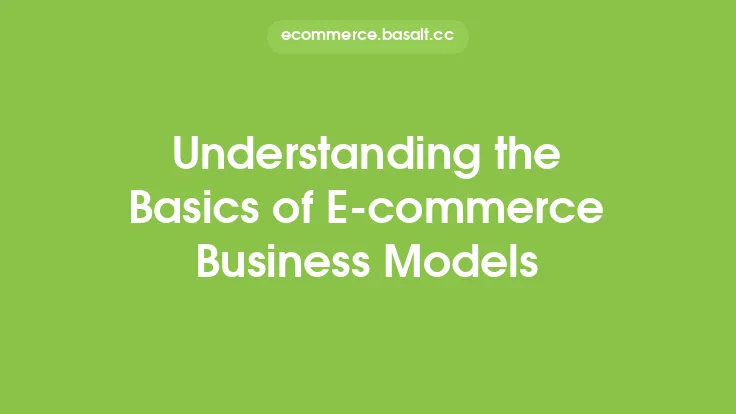The e-commerce landscape has undergone significant transformations over the years, with various business models emerging to cater to the changing needs of consumers. One such model that has gained immense popularity in recent times is the direct-to-consumer (D2C) e-commerce model. This approach involves companies selling their products directly to customers, bypassing traditional intermediaries such as wholesalers, distributors, and retailers. In this article, we will delve into the world of D2C e-commerce, exploring its benefits, challenges, and the factors that have contributed to its rise.
What is D2C E-commerce?
D2C e-commerce refers to a business model where companies manufacture and sell their products directly to customers through various channels, including websites, social media, and online marketplaces. This approach allows companies to have complete control over the production, marketing, and distribution of their products, enabling them to build strong relationships with their customers. D2C e-commerce has been around for several decades, but its popularity has surged in recent years, thanks to the proliferation of digital technologies and the growing demand for personalized shopping experiences.
Benefits of D2C E-commerce
The D2C e-commerce model offers several benefits to companies, including:
- Increased profit margins: By cutting out intermediaries, companies can retain a larger share of the revenue generated from sales.
- Improved customer relationships: D2C e-commerce enables companies to interact directly with their customers, gather feedback, and build strong relationships.
- Enhanced brand control: Companies have complete control over their brand image, messaging, and customer experience.
- Faster product development: D2C e-commerce allows companies to quickly test and iterate on new products, reducing the time and cost associated with traditional product development processes.
- Access to customer data: Companies can collect valuable customer data, which can be used to inform marketing strategies, improve customer experiences, and drive business growth.
Challenges of D2C E-commerce
While the D2C e-commerce model offers several benefits, it also presents some challenges, including:
- Higher operational costs: Companies need to invest in e-commerce platforms, marketing, and logistics, which can be costly.
- Increased competition: The D2C e-commerce space is highly competitive, with many companies vying for customers' attention.
- Complexity of logistics: Managing logistics and supply chains can be complex and time-consuming, particularly for companies that are new to e-commerce.
- Balancing personalization and scalability: As companies grow, they need to balance the need for personalized customer experiences with the need for scalability and efficiency.
Factors Contributing to the Rise of D2C E-commerce
Several factors have contributed to the rise of D2C e-commerce, including:
- Digital transformation: The widespread adoption of digital technologies has made it easier for companies to reach and engage with customers directly.
- Changing consumer behaviors: Consumers are increasingly seeking personalized shopping experiences, and D2C e-commerce allows companies to deliver on this promise.
- Advances in e-commerce platforms: The development of user-friendly e-commerce platforms has made it easier for companies to set up and manage online stores.
- Growing demand for sustainability: Consumers are increasingly prioritizing sustainability, and D2C e-commerce allows companies to reduce waste and carbon emissions by cutting out intermediaries.
Successful D2C E-commerce Companies
Several companies have achieved significant success with the D2C e-commerce model, including:
- Warby Parker: An eyewear company that has disrupted the traditional eyewear industry with its D2C approach.
- Dollar Shave Club: A company that was acquired by Unilever in 2016, Dollar Shave Club is a prime example of a successful D2C e-commerce company.
- Casper: A mattress company that has revolutionized the way people buy mattresses, Casper is a leading example of a D2C e-commerce company.
- Glossier: A beauty company that has built a loyal customer base through its D2C approach, Glossier is a prime example of a successful D2C e-commerce company.
Best Practices for D2C E-commerce Companies
To succeed in the D2C e-commerce space, companies should follow several best practices, including:
- Develop a strong brand identity: Companies should invest in building a strong brand identity that resonates with their target audience.
- Focus on customer experience: Companies should prioritize customer experience, ensuring that customers have a seamless and personalized shopping experience.
- Invest in data analytics: Companies should invest in data analytics to gain insights into customer behavior and preferences.
- Be agile and adaptable: Companies should be prepared to pivot and adapt to changing market conditions and consumer behaviors.
Future of D2C E-commerce
The future of D2C e-commerce looks promising, with the market expected to continue growing in the coming years. As companies continue to innovate and experiment with new technologies, we can expect to see even more personalized and immersive shopping experiences. The rise of social commerce, augmented reality, and artificial intelligence will also play a significant role in shaping the future of D2C e-commerce. As companies navigate this evolving landscape, they must remain focused on delivering exceptional customer experiences, building strong relationships with their customers, and staying ahead of the competition.





